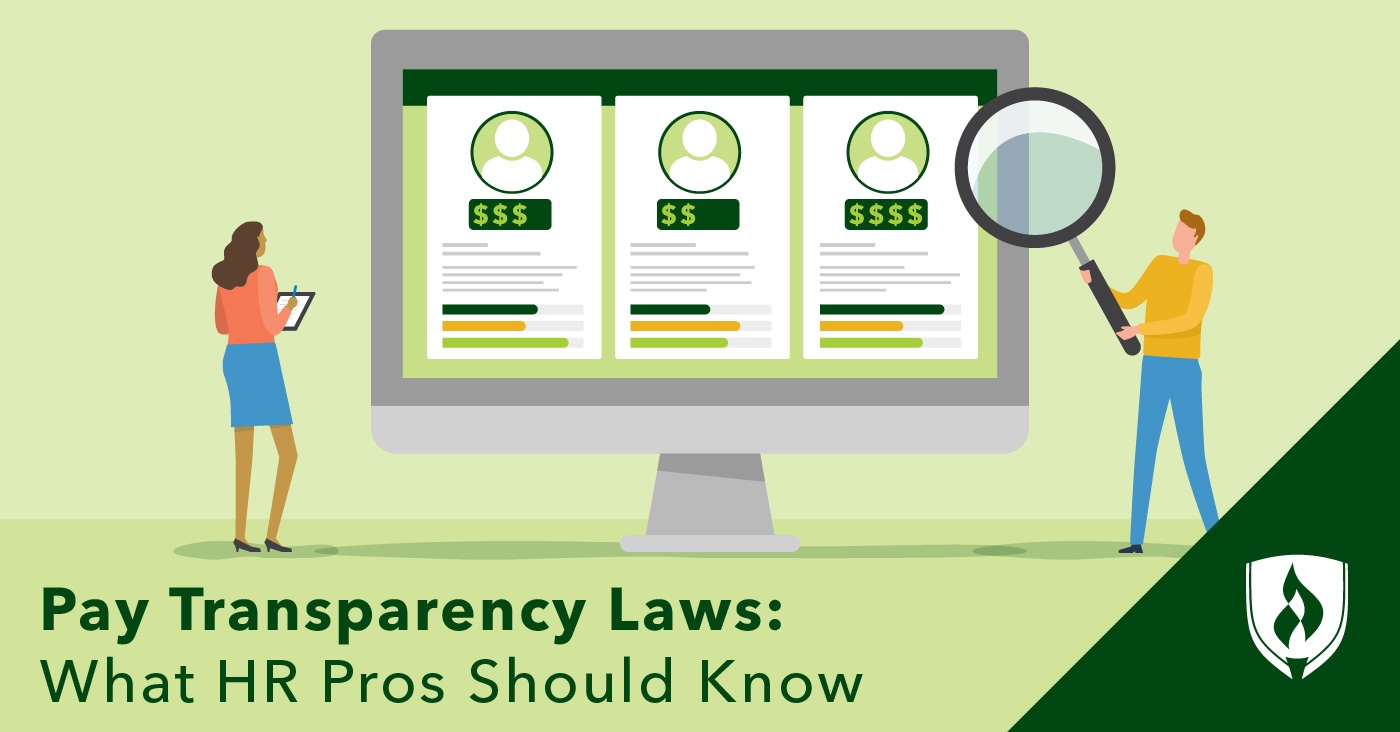
The latest human resources-related legislation sweeping the nation is a push for both public and private employers to provide pay transparency. The first salary transparency law took effect in California in 2018. Since then, legislators in several cities and states have also voted for similar pay transparency regulations, with more considering legislation.
While these laws and regulations all aim to accomplish generally the same goal, there is some nuance to their implementation. Successfully navigating pay transparency laws involves more than simply posting salaries on job listings. As an HR professional, you need to consider the current labor market, the perception that listed salaries gives job applicants and the potential impact on current employees.
Keep reading to find out everything you need to know about salary transparency legislation.
What are pay transparency laws? And where are they happening?
At their fundamental level, pay transparency laws require companies to be prepared to disclose salary information to job applicants. The stated goal of this legislation is to help reduce discrimination-based pay gaps. However, each particular state or city has unique requirements detailing what companies need to do.
Since California’s law was the first, it established the tone for pay transparency. Under a revision to the California Equal Pay Act, employers must provide a pay scale for a job if requested by an applicant who has completed an interview.
New York City is another location getting attention with salary transparency regulation. Given its size and cultural prominence, NYC’s legislation may be an example for the rest of the nation. Starting November 2022, companies will need to provide a salary range with a minimum and maximum salary. This law will apply to companies with more than four employees.
Even if you’re not in NYC, you still may be subject to this law. Companies hiring for remote positions that could be filled by an applicant in NYC are still required to post a salary range.
Other cities and states with similar laws include:
- Colorado
- Connecticut
- Maryland
- Nevada
- Rhode Island
- Washington state
- Toledo, Ohio
- Cincinnati, Ohio
In addition to salary ranges being disclosed at some point during the hiring process, many of these laws also ban the use of an applicant’s salary history when determining what to pay them. This gives applicants a fresh slate and puts the onus on employers to base compensation figures off a true market rate.
What do businesses think about pay transparency laws?
While many businesses state they support the principle behind this legislation, companies are also concerned with how to navigate it. Businesses are worried about unintended consequences, especially in a tight labor market.
“Pay transparency is generally a great thing,” says business attorney Damien H. Weinstein from Weinstein + Klein. “It’s a great idea both in theory and purpose, but it’s harder to implement.” Weinstein explains that pay transparency laws create another administrative and compliance concern for businesses.
While supporting some form of pay transparency legislation, a letter from pro-business organizations—the Partnership for New York City and the Chambers of Commerce of all five boroughs—points to some perceived shortcomings of NYC’s pay transparency law.1 In particular, the organizations note that there are many legitimate reasons why disclosing pay may cause problems.
The obvious concern for employers is that current employees will be able to see the salary range on job postings and approximate what new coworkers will be earning. The letter says, “During a labor shortage, or in the context of achieving diversity goals, the posted maximum may be significantly higher than the historical salary ranges, creating dissatisfaction in the workforce and demands to adjust existing pay scales that the employer may be unable to afford.”
Weinstein says he has seen concern from employers about how existing employees may react to these changes.
“We’re also seeing some pushback from small business clients—the management and owners specifically—about internal fighting between employees in similar positions who have different pay but also between management and more ‘rank and file’ employees.”
As the Partnership for New York City’s letter explains, there are fair and legal reasons why employers may want to offer higher pay on some jobs, like if they are trying to attract particular talent.
The letter also says that salary does not always accurately represent total compensation for high-paying jobs. For these jobs, the full compensation package may include substantial bonuses, stock options or other benefits.
Not only does the posted salary send a message to applicants, but it also signals to your competition, according to the letter from the Partnership for New York City. When pay ranges are public, competing businesses are more easily able to outbid each other. This can make it extremely difficult for some businesses to find and hire talent.
Proponents of salary transparency laws aren’t likely to be swayed by these arguments—after all, businesses must adapt to the legal environment they operate in or deal with the consequences.
How do HR pros need to respond?
Now that you have a better understanding of pay transparency laws and some of the challenges that businesses may face, let’s take a look at how HR professionals will need to help businesses adapt. To do this requires complying with the new laws while considering the job applicants, labor market conditions and even current employees.
First, employers need to determine if their company is subject to a pay transparency law. Even if there’s not one in your state or city, you may still need to post a salary range if you are hiring for a remote position. This is an area that may require exploration and clarification from a legal counsel to better understand the risks involved.
Some firms reacted to Colorado’s law by listing remote positions as not eligible to be performed in Colorado. However, there has been some bad publicity surrounding this attempt to circumvent the law, as well as a letter from Colorado’s governor.
Employers should also prepare for tension within the company when publishing salary ranges on job listings. If employers are offering a higher salary range than what a current employee in a similar position makes, this may cause jealousy or conflict. Having a fact-based justification for any salary disparities can be a helpful tool when discussing with any concerned employees. Additionally, it may be wise to get ahead of any friction by advocating for a company-wide market rate adjustment. While closing pay gaps proactively is an expense some employers may not easily stomach, it may be a net positive to avoid the potential damage to morale and increased turnover that may come with additional transparency.
Finally, employers need to consider the message the listed salary range sends. For jobs that rely heavily on non-salary compensation, consider emphasizing the various benefits on the job posting. This way, applicants do not automatically dismiss the opportunity because of perceived low compensation.
Adapting to a changing labor market
Needless to say, a lot has changed since the aftermath of the “Great Recession” where high unemployment rates gave businesses a lot of leverage for dictating compensation. Now, a tight labor market paired with additional transparency means employers need to rethink some of their approach and adapt to the market.
Learn more about the ways organizations are shifting their approach to recruitment and hiring with our article “7 Hiring Incentives for Attracting Talent in a Tight Labor Market.”
1Linda Baran, Thomas Grech, Randy Peers, Lisa Sorin, Jessica Walker, and Kathryn Wylde, “Employers Call on City Council to Amend Salary Posting Law,” Partnership for New York City, April 4, 2022. [Accessed May 2022] https://pfnyc.org/news/employers-call-on-city-council-to-amend-salary-posting-law/.




